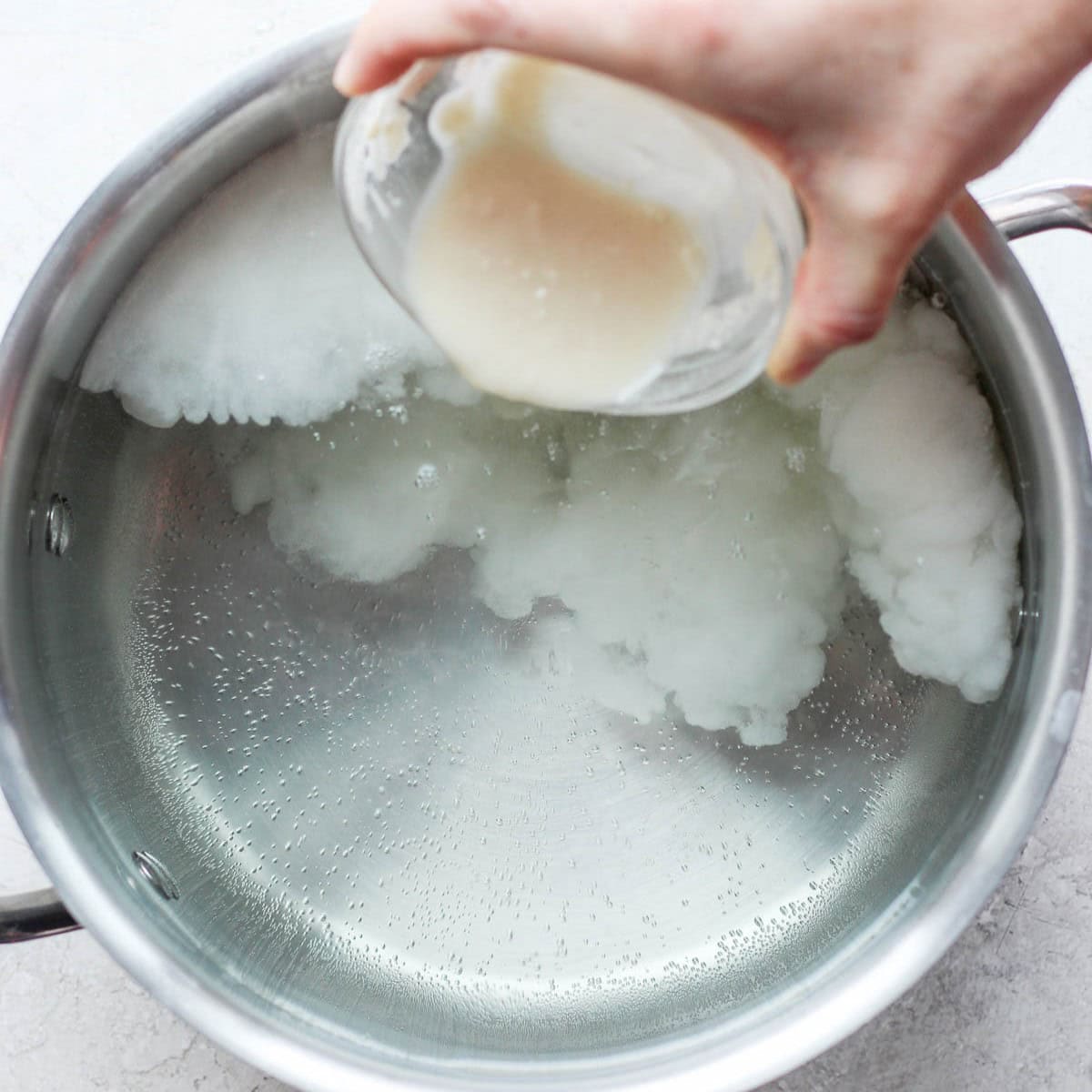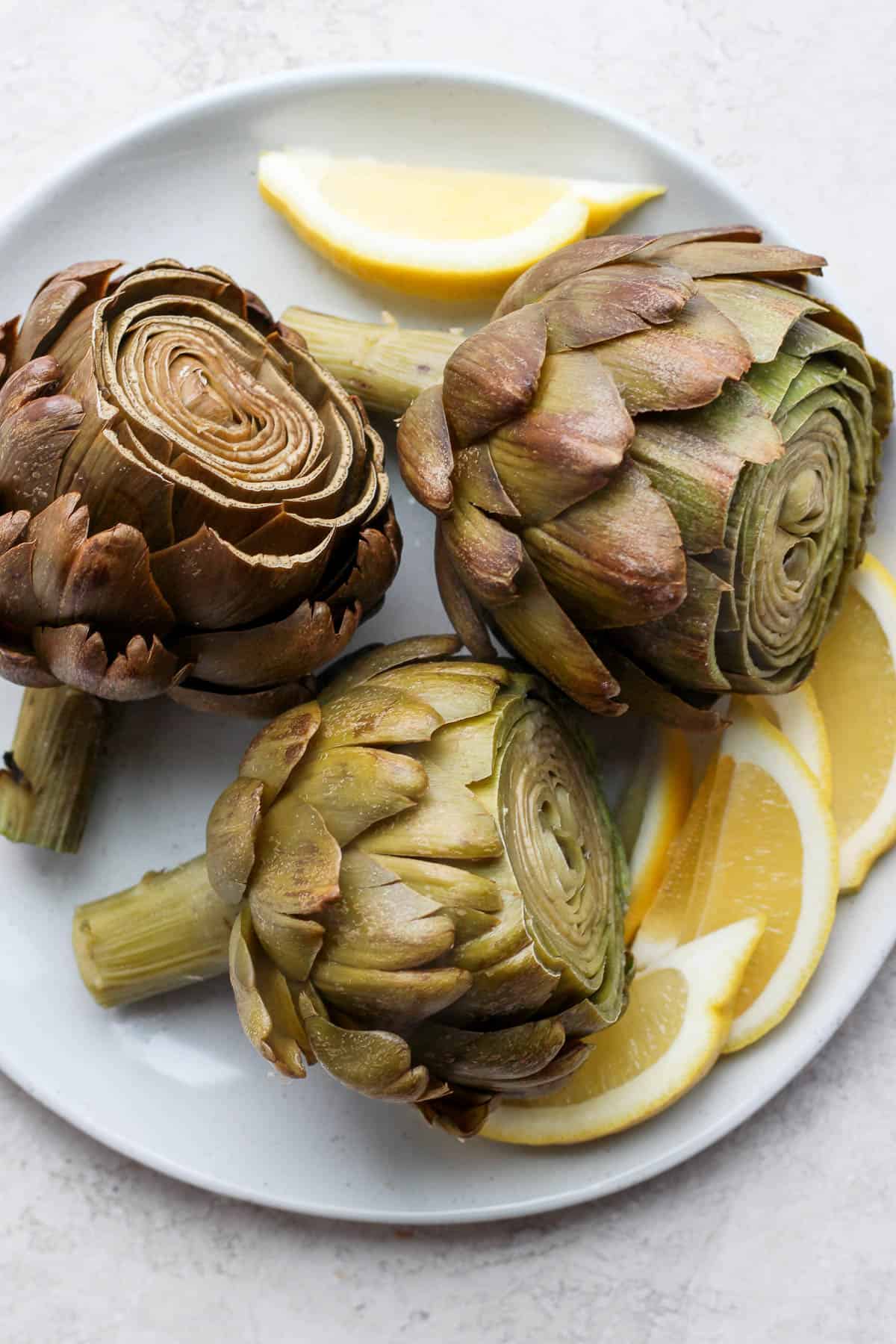How to Cook an Artichoke
Updated Dec 09, 2024
Cooking an artichoke is really simple! I prefer steaming or boiling for the most tender leaves and the best results.
This post may contain affiliate links. Please read our disclosure policy.
Artichokes might look a little quirky, but cooking them is actually pretty straightforward. Once you know the steps, they turn into something kind of special—soft, flavorful, and perfect for dipping or just eating as is. Whether you go the steaming route or boil them up with a little extra flavor, it’s all about getting that perfect tender texture. Let’s break it down together so it feels totally doable.

Table of contents
Cooking an artichoke isn’t just about the flavor—it’s a powerhouse of nutrition, too. Packed with folate, fiber, vitamins C and K, iron, and potassium, it’s like a little nutrient jackpot. Fun fact: according to the USDA, artichokes rank #7 out of 20 common fruits and veggies for antioxidants—higher than blackberries and black beans. Who knew?
Tips for Choosing an Artichoke at the Grocery Store
Picking the right artichoke is all about finding one that’s fresh and ready to cook. Here’s what to keep in mind:
- Season matters: Artichokes are at their peak in the spring and fall, so that’s the best time to grab the freshest ones.
- Feel the weight: A good artichoke should feel heavy for its size. That’s a sign it’s fresh and packed with moisture.
- Check the leaves: Look for tightly packed leaves that are bright green. If the leaves are starting to spread or look dry, it’s past its prime.
- Give it a squeeze: Gently press the artichoke—it should feel firm, not soft or spongy. Bonus points if it makes a little squeaky sound when you press the leaves together!
- Look for freshness: Avoid artichokes with browning, shriveled tips, or dry-looking stems. A fresh stem will feel firm and look vibrant.
How to Clean and Trim Artichokes


How to Steam Artichokes


How to Boil Artichokes




How to Eat an Artichoke
Eating an artichoke might feel a little unusual at first, but once you get the hang of it, it’s kind of fun. Here’s how it’s done:
- Start with the leaves: Pull off one leaf at a time from the outside. If you’re feeling fancy, dip the end in some melted butter, a garlicky sauce, or whatever you’ve got.
- Scrape the good stuff: Hold the base of the leaf in your teeth and gently scrape off the soft, edible part. That’s where all the flavor lives. Toss the rest—it’s done its job.
- Keep going: Work your way toward the middle. As you get closer, the leaves get softer and smaller.
- Deal with the fuzzy stuff: Once you’ve peeled off the leaves, you’ll hit the choke—the fuzzy bit in the center. Use a spoon to scoop it out and toss it. Trust me, you don’t want to eat that.
- The best part—the heart: What’s left is the artichoke heart, and it’s worth the effort. Soft, flavorful, and perfect on its own or with a little extra dip.
It might feel a bit hands-on, but that’s part of the charm. By the end, you’ll be an artichoke pro—and probably ready for another one.
What to Eat with an Artichoke
Try it simply with a sauce made from a drizzle of olive oil, lemon juice, and pressed garlic. You can also try dipping leaves and the heart with:
- Homemade Aioli
- Homemade Ranch Dip
- Cucumber Yogurt Sauce
- Lebanese Garlic Sauce
- Store-bought mayo doctored with some minced garlic, lemon juice, and olive oil or mayo and balsamic vinegar
Tips for Cooking Artichokes
- Don’t skip the flour and lemon mixture when boiling. It will help retain the light cream color of a cooked artichoke.
- Don’t use aluminum or carbon steel pans. They impart a metallic taste and discolor the artichokes.
- Shave the stems with a paring knife if they are particularly woody. This will make them more tender when cooked.
- Use a pair of kitchen shears to cut off the pointed ends of the leaves before cooking.
Frequently Asked Questions
Tightly covered, artichokes should be good for three to five days. You can also tightly wrap and freeze them, but honestly, artichokes are best enjoyed immediately after cooking.
Prep the artichoke as above, and then cut in half. Steam the halves as directed above. Halved artichokes will need about half as much time to cook. After steaming, brush with oil and grill until lightly browned.
While generally available all year, they are at their peak from March to May. A second harvest comes in in September and October.

For More Cooking Tutorials:
- How to Cook Couscous
- How to Cook Quinoa
- How to Cook Rice
- How to Cook Brown Rice
- How to Cook Pasta
- How to Make Chicken Stock
- How to Make Salad Dressing
If you’ve found this cooking resource for How to Cook an Artichoke helpful or if you’ve tried any recipe on Feel Good Foodie, then don’t forget to rate the recipe and leave me a comment below! I would love to hear about your experience with this technique. And if you snapped some shots of it, share it with me on Instagram so I can repost on my stories!

How to Cook an Artichoke by Steaming or Boiling
Ingredients
Steaming Method
- 3 Artichokes
Boiling Method
- 3 Artichokes
- Juice of 1 lemon
- 3 tablespoons all-purpose flour
- 1 garlic bulb cut in half
Instructions
- Remove about an inch of the top of the artichoke, remove any small dark leaves from the bottom
- Bring a large pot of salted water to boil.
Steaming Method
- Place the artichokes in the steamer basket and carefully place into the boiling water.
- Reduce to a simmer, and cook for 40-60 minutes or until an outer leaf can easily be removed.
Boiling Method
- Combine flour and lemon juice, mix to a thin paste, add water if necessary.
- Once boiling, add lemon and flour mixture and garlic bulb to the boiling water.
- Carefully place the artichokes into the boiling water.
- Reduce to a simmer, and cook for about 35 minutes or until an outer leaf can easily be removed
Equipment
Notes
Nutrition
Nutrition information provided is an estimate. It will vary based on cooking method and specific ingredients used.






Comments
I’ve never added flour+lemon to my artichokes before, but I can’t wait to try the difference!
Let me know your thoughts once you’ve given it a try!